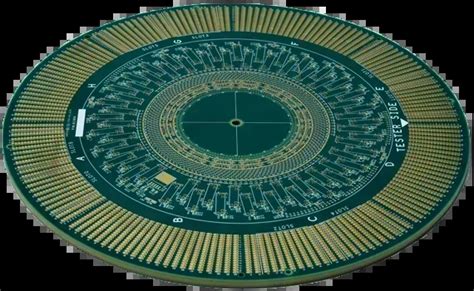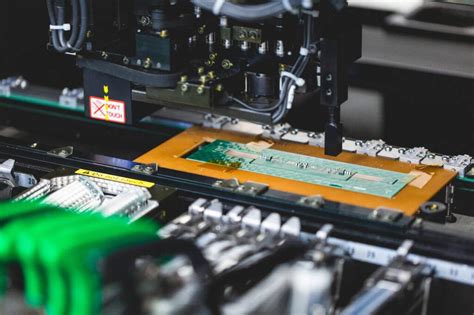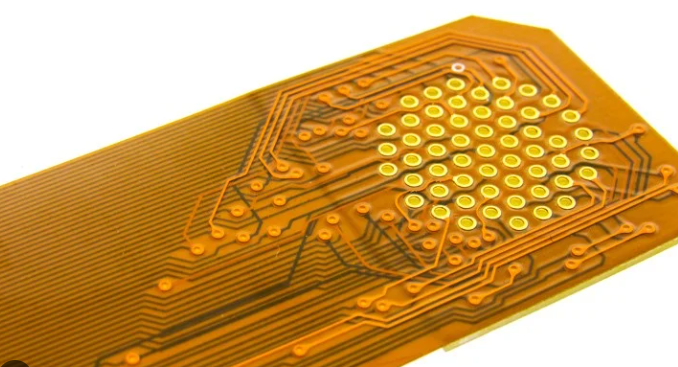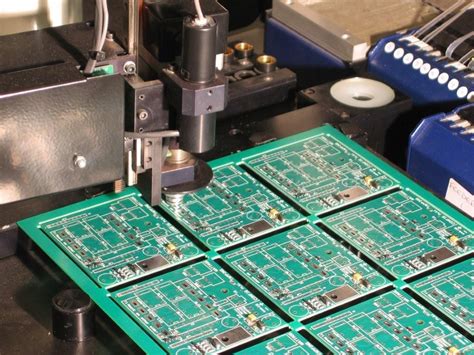Through-Hole PCB Assembly: A Comprehensive Guide
Introduction
Printed Circuit Boards (PCBs) are the backbone of modern electronics, providing the necessary platform for electrical components to connect and function as intended. Among the various methods of assembling PCBs, Through-Hole Technology (THT) remains a widely used and reliable approach, particularly for applications requiring robust mechanical connections and high reliability. This article delves into the intricacies of Through-Hole PCB assembly, exploring its advantages, processes, components, and applications.
1. Understanding Through-Hole Technology (THT)
Through-Hole Technology involves the insertion of component leads through drilled holes in the PCB, followed by soldering on the opposite side to establish electrical and mechanical connections. This method contrasts with Surface Mount Technology (SMT), where components are mounted directly onto the surface of the PCB. THT has been a staple in electronics manufacturing for decades, and while SMT has gained prominence due to its suitability for miniaturization, THT continues to be relevant in many applications.
2. Advantages of Through-Hole PCB Assembly
2.1 Mechanical Strength
One of the primary advantages of THT is the superior mechanical strength it offers. The leads of through-hole components pass through the PCB and are soldered on the opposite side, creating a robust connection that can withstand mechanical stress, vibration, and thermal cycling. This makes THT ideal for applications in harsh environments, such as automotive, aerospace, and industrial electronics.
2.2 Reliability
Through-hole components are generally larger and easier to handle than their surface-mount counterparts, reducing the likelihood of placement errors. Additionally, the soldering process for THT is more forgiving, as the holes in the PCB help align the components, ensuring proper placement and reducing the risk of solder bridges or cold joints. This reliability is crucial for critical applications where failure is not an option.
2.3 Ease of Prototyping and Repair
THT is often preferred during the prototyping phase of product development. The larger size of through-hole components makes them easier to work with, allowing engineers to quickly assemble and modify prototypes. Furthermore, through-hole components are easier to replace or repair, as they can be desoldered and removed without specialized equipment, making THT a practical choice for low-volume production and repair work.

3. Components Used in Through-Hole PCB Assembly
Through-hole components come in various forms, each designed for specific functions and applications. Some of the most common through-hole components include:
3.1 Resistors
Through-hole resistors are widely used in electronic circuits to limit current flow, divide voltages, and provide biasing. They are available in different power ratings and resistance values, making them versatile components in both analog and digital circuits.
3.2 Capacitors
Through-hole capacitors are essential for filtering, decoupling, and energy storage in electronic circuits. They come in various types, including ceramic, electrolytic, and tantalum capacitors, each with unique characteristics suited to specific applications.
3.3 Diodes and Transistors
Diodes and transistors are fundamental semiconductor devices used in through-hole PCB assembly. Diodes allow current to flow in one direction, while transistors amplify or switch electronic signals. Through-hole versions of these components are commonly used in power supplies, amplifiers, and signal processing circuits.
3.4 Integrated Circuits (ICs)
Through-hole ICs, such as microcontrollers, operational amplifiers, and voltage regulators, are widely used in electronic design. These components are typically housed in Dual In-line Packages (DIPs), which are easy to insert into PCBs and solder.
3.5 Connectors and Headers
Connectors and headers are essential for establishing electrical connections between PCBs and external devices. Through-hole connectors are commonly used in applications requiring robust and reliable connections, such as in industrial equipment and consumer electronics.
4. The Through-Hole PCB Assembly Process
The through-hole PCB assembly process involves several steps, each critical to ensuring the quality and reliability of the final product. Below is an overview of the key stages in the THT assembly process:
4.1 PCB Design and Layout
The first step in through-hole PCB assembly is designing the PCB layout. This involves determining the placement of components, routing of traces, and drilling of holes for through-hole components. Proper design is crucial to ensure that the PCB functions as intended and that components can be easily inserted and soldered.
4.2 Component Procurement
Once the PCB design is finalized, the next step is procuring the necessary components. This involves sourcing through-hole components from reputable suppliers and ensuring that they meet the required specifications. Proper component selection is essential to avoid issues during assembly and to ensure the reliability of the final product.
4.3 PCB Fabrication
After the design and component procurement, the PCB itself must be fabricated. This involves creating the copper traces, drilling holes for through-hole components, and applying solder mask and silkscreen. The quality of the PCB fabrication process directly impacts the ease of assembly and the performance of the final product.
4.4 Component Insertion
The component insertion process involves placing through-hole components into the drilled holes on the PCB. This can be done manually or using automated insertion machines, depending on the volume and complexity of the assembly. Proper alignment and insertion are critical to ensure that components are securely placed and ready for soldering.
4.5 Soldering
Soldering is the process of creating electrical and mechanical connections between the component leads and the PCB. In through-hole assembly, this is typically done using wave soldering or hand soldering techniques. Wave soldering is a common method for high-volume production, where the PCB is passed over a wave of molten solder, which flows into the holes and creates connections. Hand soldering is used for prototyping, low-volume production, or rework, where individual joints are soldered using a soldering iron.
4.6 Inspection and Testing
After soldering, the assembled PCB undergoes inspection and testing to ensure that all connections are properly made and that the board functions as intended. Visual inspection, automated optical inspection (AOI), and in-circuit testing (ICT) are common methods used to identify defects such as solder bridges, cold joints, or misplaced components. Functional testing may also be performed to verify that the PCB operates correctly in its intended application.
4.7 Cleaning and Finishing
Once the PCB has passed inspection and testing, it may undergo cleaning to remove flux residues and other contaminants. This is particularly important for applications where cleanliness is critical, such as in medical or aerospace electronics. Finally, the PCB may be coated with a protective finish, such as conformal coating, to protect it from environmental factors like moisture, dust, and chemicals.

5. Applications of Through-Hole PCB Assembly
Through-hole PCB assembly is used in a wide range of applications, particularly those requiring high reliability and durability. Some of the key industries and applications where THT is commonly employed include:
5.1 Automotive Electronics
The automotive industry demands electronics that can withstand harsh conditions, including temperature extremes, vibration, and moisture. Through-hole components are often used in automotive electronics, such as engine control units (ECUs), sensors, and lighting systems, due to their mechanical strength and reliability.
5.2 Aerospace and Defense
In aerospace and defense applications, electronics must operate reliably in extreme environments, including high altitudes, rapid temperature changes, and exposure to radiation. Through-hole PCB assembly is commonly used in avionics, communication systems, and military equipment, where failure is not an option.
5.3 Industrial Electronics
Industrial electronics, such as programmable logic controllers (PLCs), motor drives, and power supplies, often require robust connections that can withstand mechanical stress and thermal cycling. Through-hole components are well-suited to these applications, providing the necessary durability and reliability.
5.4 Consumer Electronics
While surface-mount technology is more common in consumer electronics, through-hole components are still used in certain applications, such as power supplies, audio equipment, and large displays. THT is also used in products that require easy repair or modification, such as DIY electronics kits.
5.5 Medical Devices
Medical devices, such as imaging equipment, patient monitors, and diagnostic tools, require high reliability and precision. Through-hole PCB assembly is often used in these applications, particularly for components that need to withstand repeated sterilization or exposure to harsh chemicals.
6. Challenges and Considerations in Through-Hole PCB Assembly
While through-hole PCB assembly offers many advantages, it also presents certain challenges that must be addressed to ensure successful production:
6.1 Component Availability
As surface-mount technology has become more prevalent, the availability of through-hole components has decreased, particularly for newer or more specialized parts. Designers must carefully consider component availability when choosing through-hole technology for their projects.
6.2 PCB Real Estate
Through-hole components are generally larger than surface-mount components, requiring more space on the PCB. This can be a limitation in designs where miniaturization is a priority. Designers must carefully balance the need for mechanical strength and reliability with the desire for a compact design.
6.3 Assembly Cost
Through-hole PCB assembly can be more labor-intensive than surface-mount assembly, particularly for high-volume production. The need for manual insertion and soldering can increase production costs, making THT less economical for large-scale manufacturing.
6.4 Thermal Management
Through-hole components can create thermal challenges, as their leads conduct heat away from the PCB. This can lead to localized heating or cooling, which must be managed through proper PCB design and thermal management techniques.

7. Future Trends in Through-Hole PCB Assembly
Despite the growing popularity of surface-mount technology, through-hole PCB assembly is expected to remain relevant in certain applications. However, the industry is evolving, and several trends are shaping the future of THT:
7.1 Hybrid Assembly
Many modern PCBs use a combination of through-hole and surface-mount components, known as hybrid assembly. This approach allows designers to leverage the strengths of both technologies, using through-hole components for critical connections and surface-mount components for miniaturization and high-density designs.
7.2 Automation
Advancements in automation are making through-hole PCB assembly more efficient and cost-effective. Automated insertion machines and robotic soldering systems are reducing the need for manual labor, making THT more competitive with SMT in certain applications.
7.3 Advanced Materials
The development of advanced materials, such as high-temperature substrates and lead-free solders, is improving the performance and reliability of through-hole PCB assembly. These materials enable THT to meet the demands of increasingly challenging applications, such as those in the aerospace and automotive industries.
7.4 3D Printing
3D printing technology is being explored as a way to create custom through-hole components and PCBs. This could revolutionize the prototyping process, allowing designers to quickly create and test new designs without the need for traditional manufacturing methods.
Conclusion
Through-hole PCB assembly remains a vital technology in the electronics industry, offering unmatched mechanical strength, reliability, and ease of repair. While surface-mount technology has become the dominant method for many applications, THT continues to play a crucial role in industries where durability and robustness are paramount. As the industry evolves, through-hole PCB assembly will continue to adapt, leveraging advancements in automation, materials, and design to meet the demands of modern electronics. Whether in automotive, aerospace, industrial, or medical applications, through-hole technology will remain a cornerstone of electronic manufacturing for years to come.






